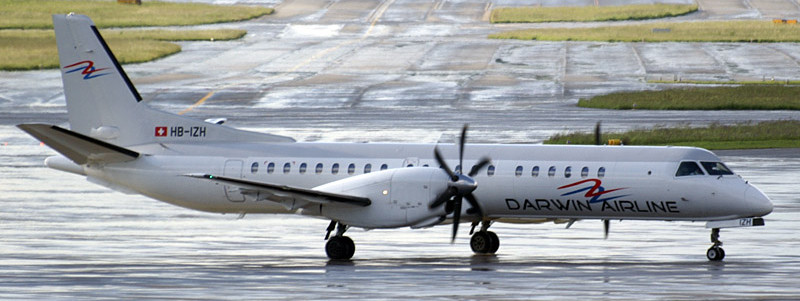I trotted off for an evening walk and ended up at Lansdowne Park and presto [pardon the pun] there was the new Confederation Otrain. Sort of. Inside it looked very familiar:
The deja vu all over again feeling was partially due to a flood of memories of using the Seattle LRT last year. Although Seattle has Korean-made equipment. With that in mind, let’s peek into a Seattle downtown station.
Their downtown station is used by diesel buses and the LRT. In the pic above, note the [indoor] escalator; the electric pick up lines suspended a few inches below the ceiling, and the shallow track depth. Low floor trains don’t need a high platform, with all the inherent dangers of waiting passengers falling off onto the tracks [a subjective fear much more than an objective reality]. This is merely a high curb.
The mixed train and bus model is awkward for running driverless trains, which ours eventually will be. I look forward to that day, because as Vancouver has discovered, they can roll out extra trains anytime at very minimal marginal cost, even if just for a single run. Try that if you have to schedule whole shifts at premium rates for human drivers.
And, to warm the cockles of our burdened taxpayers, once the drivers are out of the equation, user fares will probably cover 100% of the operating cost of the LRT (they do in Vancouver). This should also be a major incentive to expand the phase 1 system to cover additional areas of the city, provided we haven’t locked them into automobile-oriented landscapes [which I think we are busy doing – our planning is totally self-contradictory!].
Of course, there still will be a fleet of buses with human operators.
If we let Kanata buses into the tunnel, I don”t think we would ever get them out, even when our LRT extends to Bayshore. Maybe it is better to start the training earlier than later.
I very much liked the concrete surface around the rails. It looks clean and would be easy to keep clean of litter. A distinct improvement over the tracks and ties visible on gravel base we are so familiar with in NYC or Paris …
I don’t know if Ottawa will have concrete track beds in the stations or gravel, with rails set in concrete or perched above on concrete ties. Here’s a bit of Seattle track set on concrete structure at a suburban elevated platform:
Another downtown station had much higher vaulted ceilings, similar to those originally proposed for Ottawa’s LRT but discarded in favour of lower, flat ceiling stations:
The Seattle system was earning revenue from selling vehicle wraps as shown below, complete with punny Catering Train title and Subway sponsor. Ottawa won’t sully its system with advertising for the first few years, in case dim users can’t identify a train if it looks like a sandwich.
Here’s a short train without the wrapper.
All of the advertising in some cars was bought by one sponsor. At the airport (affluent target audience), the entire station was papered with advertising by the same condo developer promoting the convenience of his project being right on the LRT line. Taking the LRT to the airport was way more sensible than the always-congested parallel sloway:
There is ample empirical evidence that developers can charge a premium for residences connected directly to a rail transit line. The same is true for offices in a competitive market, but with Ottawa having essentially one renter client (the Feds) I don’t think there will be any premiums paid. It also remains to be seen if it will actually be physically feasible or economic for new developments to connect to Ottawa’s downtown stations. The Place de Ville complex, for example, hosts the Lyon downtown business district station; in 45 years no one has been able to connect to their underground mall. Maybe that will change in the future. Maybe.
For those who like videos, here are a few I shot back in Sept 2014. You can watch them here on the small window, or click on the YouTube logo in the LRC and enlarge them to full screen at the YouTube player.
a Seattle LRT departs a major elevated station with glass walls, notice the trackwork which seems to offer dangerous footing to anyone who steps in, compared to videos number 2 and 3 which follow:
click here if the video doesn’t play: http://youtu.be/3Gl2hJZYYNo
In this video, a Seattle LRT departs a suburban line station. There are two separate glass roof structures to shelter passengers with a long stretch of open platform between them. At the end of the platform, there are crosswalks over the adjacent streets, and local bus stops. These level crossings will impede train automation. Notice the infill / densification via a mid rise apartment building, of the sort Ottawa finds impossible to build even though they proliferate like rabbits in other cities:
If the video above doesn’t play, try clicking here: http://youtu.be/3Gl2hJZYYNo
Here’s a short clip of the inside of Seattle’s downtown LRT station. The LRT trains are powered by a cable suspended just below the ceiling; the tunnels and station are also used by buses. Last car out is a subway.
If that won’t play, try here: http://youtu.be/3MfkHenuIPg
If all of them won’t work for you, go to YouTube
________________________________________________________
Next: Seattle bus stops at street level














